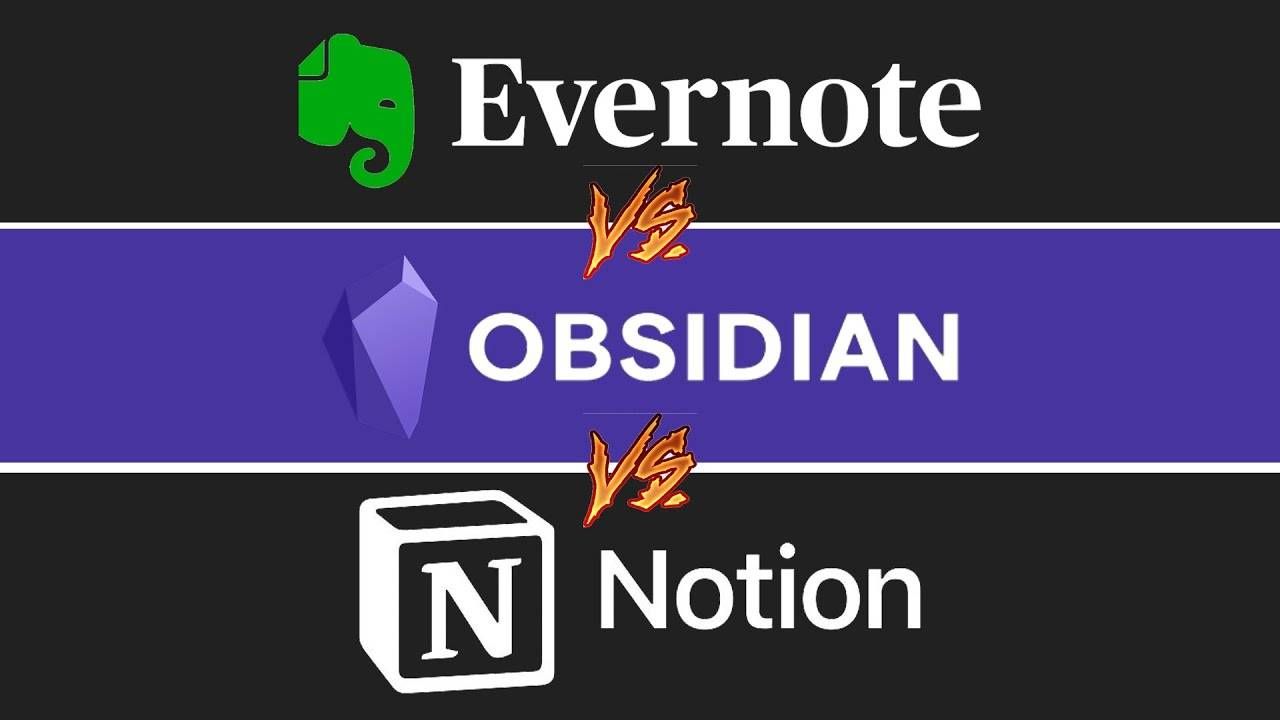

In today’s digital age, effective note-taking has become essential for productivity and organization. Let’s learn more about this topic below with Unicycle Hero as we explore the best note-taking apps available. This comprehensive comparison of Notion, Evernote, and Obsidian will help you choose the right tool for your needs.
Note-taking apps have revolutionized the way we capture, organize, and retrieve information. Gone are the days of scattered sticky notes and misplaced notebooks. These digital tools offer a centralized platform for all your thoughts, ideas, and important data.
With features like cloud synchronization, search capabilities, and multimedia integration, note-taking apps have become indispensable for students, professionals, and creatives alike. They enhance productivity, streamline workflows, and foster collaboration in various settings.
As the demand for efficient note-taking solutions grows, so does the number of available options. This article will focus on three popular contenders: Notion, Evernote, and Obsidian. Each app brings its unique strengths to the table, catering to different user preferences and needs.
Before we dive into the detailed comparison, it’s important to note that the best app for you will depend on your specific requirements, workflow, and personal preferences. Let’s explore the key features, pros, and cons of each app to help you make an informed decision.
Notion has gained significant popularity in recent years, positioning itself as more than just a note-taking app. It’s a versatile workspace that combines notes, databases, wikis, and project management tools into a single platform.
One of Notion’s standout features is its flexibility. Users can create custom templates, databases, and workflows to suit their specific needs. This adaptability makes it an excellent choice for both personal and team use.
The app’s block-based structure allows for easy organization and rearrangement of content. Users can drag and drop elements, embed multimedia, and create nested pages for a hierarchical structure. This intuitive design makes it easy to build complex documents and knowledge bases.
Notion’s collaboration features are particularly strong. Users can share pages, assign tasks, and leave comments, making it an ideal tool for team projects and knowledge sharing. The app also offers real-time editing, ensuring everyone stays on the same page.
Notion’s versatility is a major advantage. It can replace multiple tools, serving as a note-taking app, project management platform, and wiki system. This all-in-one approach can streamline workflows and reduce the need for multiple subscriptions.
The app’s customization options are extensive. Users can create tailored dashboards, databases, and templates to match their specific needs. This flexibility allows for a highly personalized workspace.
Notion’s strong collaboration features make it an excellent choice for teams. The ability to share pages, assign tasks, and collaborate in real-time enhances productivity and fosters teamwork.
While Notion’s flexibility is a strength, it can also be overwhelming for new users. The learning curve can be steep, and it may take time to set up an efficient system that works for you.
Notion’s offline functionality is limited compared to some other note-taking apps. While recent updates have improved offline access, it still relies heavily on an internet connection for full functionality.
Some users find Notion’s mobile app less intuitive than its desktop counterpart. Navigation and editing on smaller screens can be challenging, which may be a drawback for those who frequently take notes on their phones.
Evernote has been a household name in the note-taking space for over a decade. It’s known for its robust feature set, cross-platform compatibility, and powerful search capabilities.
One of Evernote’s strengths is its ability to handle various types of content. Users can create text notes, add images, attach files, and even clip web pages. This versatility makes it an excellent tool for capturing and organizing diverse information.
Evernote’s organizational system is based on notebooks and tags. Users can create multiple notebooks for different topics or projects and use tags to categorize notes further. This structure allows for flexible organization and easy retrieval of information.
The app’s search functionality is particularly powerful. It can search through text, images, and even handwritten notes, making it easy to find specific information among thousands of notes.
Evernote’s long-standing presence in the market has resulted in a mature, feature-rich platform. It offers a wide range of tools for capturing, organizing, and retrieving information.
The app’s cross-platform compatibility is excellent. Users can seamlessly switch between devices, with notes syncing automatically across all platforms.
Evernote’s web clipper is a standout feature. It allows users to save web pages, articles, and screenshots directly to their Evernote account, making it an excellent tool for research and content curation.
Evernote’s pricing model has been a point of contention for some users. Many advanced features are locked behind a premium subscription, which can be costly compared to some competitors.
While Evernote offers collaboration features, they are not as robust as those found in newer platforms like Notion. This may be a drawback for users who prioritize team collaboration.
Some users find Evernote’s interface cluttered and less intuitive compared to newer note-taking apps. The abundance of features can sometimes make simple tasks feel more complicated than necessary.
Obsidian is a relatively new entrant in the note-taking space, but it has quickly gained a devoted following. It’s designed for building a personal knowledge base and emphasizes the connections between ideas.
One of Obsidian’s key features is its focus on local storage. Notes are stored as plain text Markdown files on your device, giving you complete control over your data and ensuring privacy.
The app’s standout feature is its graph view, which visualizes the connections between your notes. This allows users to see relationships between ideas and discover new connections in their knowledge base.
Obsidian is highly customizable through plugins and themes. Users can extend the app’s functionality and tailor its appearance to their preferences, creating a truly personalized note-taking environment.
Obsidian’s local-first approach ensures that your notes are always accessible, even without an internet connection. This also provides a high level of privacy and data ownership.
The app’s graph view offers a unique way to visualize and explore your knowledge base. This can lead to new insights and connections that might not be apparent in a traditional linear note structure.
Obsidian’s use of Markdown format makes it easy to export and migrate notes to other platforms. This openness and flexibility are appreciated by users who value data portability.
While Obsidian offers sync capabilities through paid options, it doesn’t have built-in cloud sync. This can be a drawback for users who frequently switch between devices.
The app’s learning curve can be steep, especially for users new to Markdown or those unfamiliar with the concept of linked notes and knowledge graphs.
Obsidian’s collaboration features are limited compared to platforms like Notion or Evernote. It’s primarily designed for personal use, which may not suit teams or those who frequently share notes.
Selecting the best note-taking app depends on your specific needs, workflow, and preferences. Each of the apps we’ve discussed – Notion, Evernote, and Obsidian – has its strengths and potential drawbacks.
If you’re looking for an all-in-one workspace that combines note-taking with project management and collaboration, Notion might be the best choice. Its flexibility and customization options make it suitable for a wide range of use cases.
For those who need a reliable, feature-rich note-taking app with excellent cross-platform compatibility and powerful search capabilities, Evernote remains a strong contender.